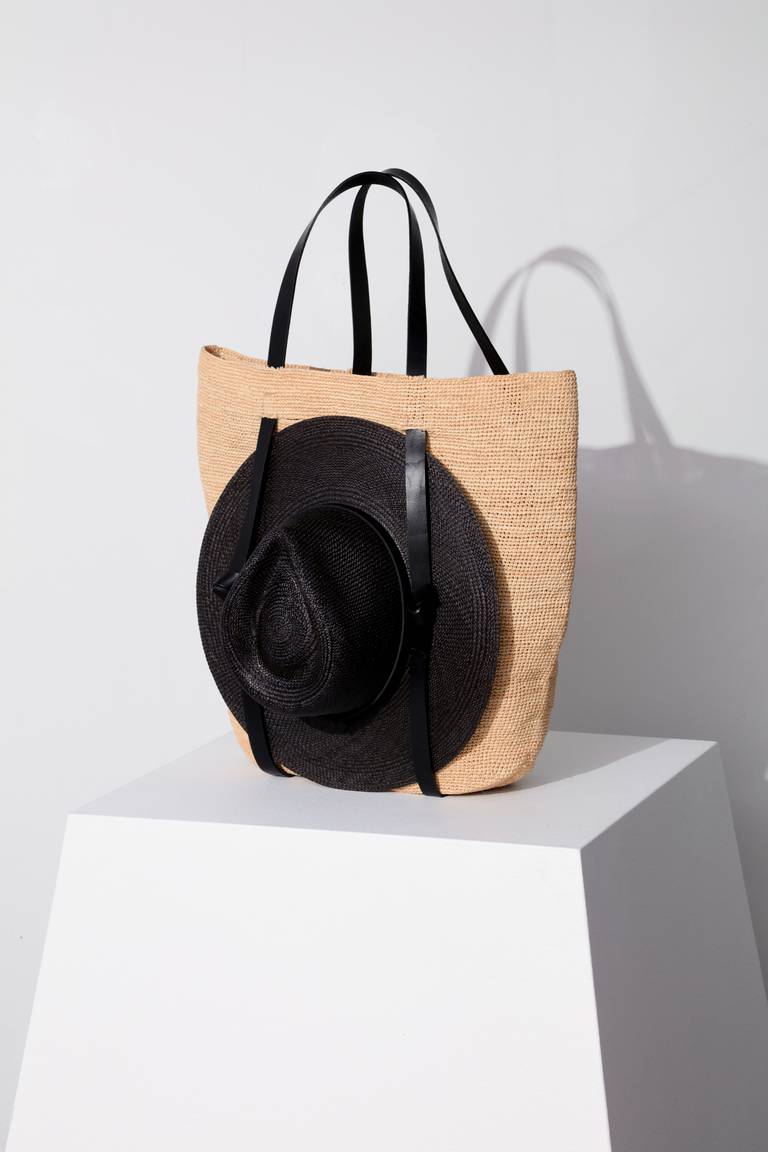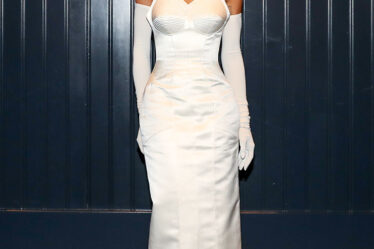
It took Reformation a year and a half of planning and five rounds of prototypes to launch its inaugural handbag assortment last month: a collection of three styles priced just above the brand’s $250 signature sundresses.
“We took an unusual amount of time to get the designs right and make sure we had the right product market fit,” said Alison Melville, general manager of product innovation at Reformation.
It’s no coincidence that Reformation is launching a bag now. Luxury brands have hiked prices dramatically in recent years. According to a BoF Insights analysis, the average designer bag in the US cost $2,475 in 2022, up from $1,944 in 2019. Over that period, Chanel increased the price of its classic flap bag by 60 percent to $8,200.
But there’s still a big market for comparatively affordable accessories: the same survey found 78 percent of respondents reported their typical budget for designer handbags is under $1,000. Labels that have launched handbags in the past year include Swedish brand Toteme, Nili Lotan and shoe brand Aquazzura.
“Not all customers can follow the price increases of the megabrands but they want and deserve beautiful products,” said Peter Baldaszti, CEO of Nanushka and its holding company, Vanguards Group. Nanushka doubled down on its handbag category in recent years and launched its first hero bag, the Origami Tote.
For brands of any size, launching handbags requires significant capital and creative resources. But the upside can be enormous. A single hit bag can put an independent brand on the map, as was the case with Telfar, Luar and Proenza Schouler. Once established, bags quickly become a dependable source of sales and profits, whether for indie New York labels or European luxury houses. Bags are popular in every season, and once a style becomes popular, it requires less planning and merchandising than ready-to-wear.
There are a few standard paths brands take when they launch handbags. Mass brands often licence their name and logo to experienced manufacturers, while designer labels are more likely to develop the category in house. They typically shoot for one or two hero styles that clearly connect with their core apparel collections, and quickly find their way onto the arms of tastemakers within a brand’s community. Pricing is key: handbags can command a premium, but should be within reach of a brand’s core customer. For example, Toteme’s T-lock top hand bag comes in at just under $1,400, while its signature trench coat costs $990. Staying under $2,000 can capture market share from luxury stalwarts like Louis Vuitton and Gucci.
“If you have a successful bag and you’re a smaller brand, it can build your business so quickly,” said Julie Gilhart, consultant and chief development officer of brand incubator Tomorrow Ltd. “It’s all about getting the right quality at the right price, and getting it on people in your community and creating a certain buzz.”
Affordable Exclusivity
Budapest-based Nanushka had experimented with handbags in its early days, but until recently, the category accounted for less than 2 percent of sales.
In recent years, Nanushka made a strategic push into the category by building out an entirely separate handbag design and development team. Bags now account for 10 percent of Nanushka’s sales, and Baldaszti said he expects that number to increase to 25 percent to 30 percent in the next three years.
The most coveted bags have recognisable attributes: Nanushka’s Origami style has unique crochet stitching that allows the bag to fold into a flat square. These distinctive style codes need to be consistent season after season, so the recognition of the brand builds over time.
Unlike ready-to-wear, accessories don’t have to be as obviously compatible with other pieces in a customer’s wardrobe, however. And they can be priced higher than a brand’s other goods, because consumers put more of an emotional weight on their choice of bag.
“A bag can be like a piece of art, and it’s become such a social signifier,” said Baldaszti.
The Origami also looks like a relative bargain next to the Prada Cleo or Bottega Veneta’s Jodie, which cost over $3,000. At $1,165 it’s priced high enough to be considered a luxury purchase, while its distinctive design and Nanushka’s status as an indie brand can have an additional halo effect.
“Exclusivity by definition should be part of luxury, and when certain big brands reach a level of saturation, I think customers can be a little bit tired of that,” Baldaszti said.
A bag can be like a piece of art, and it’s become such a social signifier.
Gilhart points to Puppet and Puppets, a small New York City-based ready-to-wear label that has garnered an international following for its Cookie bag, a simple boxy satchel adorned by a resin replica of a chocolate chip cookie. It costs $545 at retail.
“There’s a quirkiness to a Luar bag or a Puppets bag that you’re not going to find in a luxury brand’s bag,” she said. “I see luxury customers carrying these bags too because they’re fun. They don’t take themselves too seriously.”
The Style Code
Luxury hat-maker Janessa Leone released her debut collection of bags in 2021 with her existing customer in mind: her hero straw bag and its counterpart in leather feature two straps on the body, which serves a hat holding function (straw hats make up half her sales).
“As we’re developing the spring 2024 [collection] and beyond, we’re looking at product expansion from the lens of what fits into the lifestyle of our collective core offering,” Leone said. “What’s the top-selling SKU in our core category and how can we leverage that for handbags?”
While brands can pursue more avant garde designs when it comes to handbags, visual consistencies with their core business can boost overall brand recognition. Nanushka’s crochet stitching, for instance, can also be widely seen on its alt-leather or satin dresses and tops. All three of Reformation’s handbag styles have a dangling leather strands detail, a nod to the spaghetti strap ties of its best-selling summer dresses.
Timing Is Key
Despite these visual similarities, handbags are a different business from hats or apparel and require significant investment. Launching a new category is always a drain on cash flow.
“You can only go into a category like this if you’re really confident about your customer and you have a certain reach of that customer because going into bags is a huge investment, said Baldaszti. “No one should expect overnight success. You need a war chest to finance it.”
Beyond financial resources, venturing into a new product category requires extensive market research to ensure that first bag has a customer eager to buy it.
“My big takeaway from the success of the straw bags is focusing on that thing that differentiates you,” said Leone. “There are a lot of options for bags, so you have to try to ask, why does this one piece need to exist in the world? What is its purpose? Why do people need this?”


